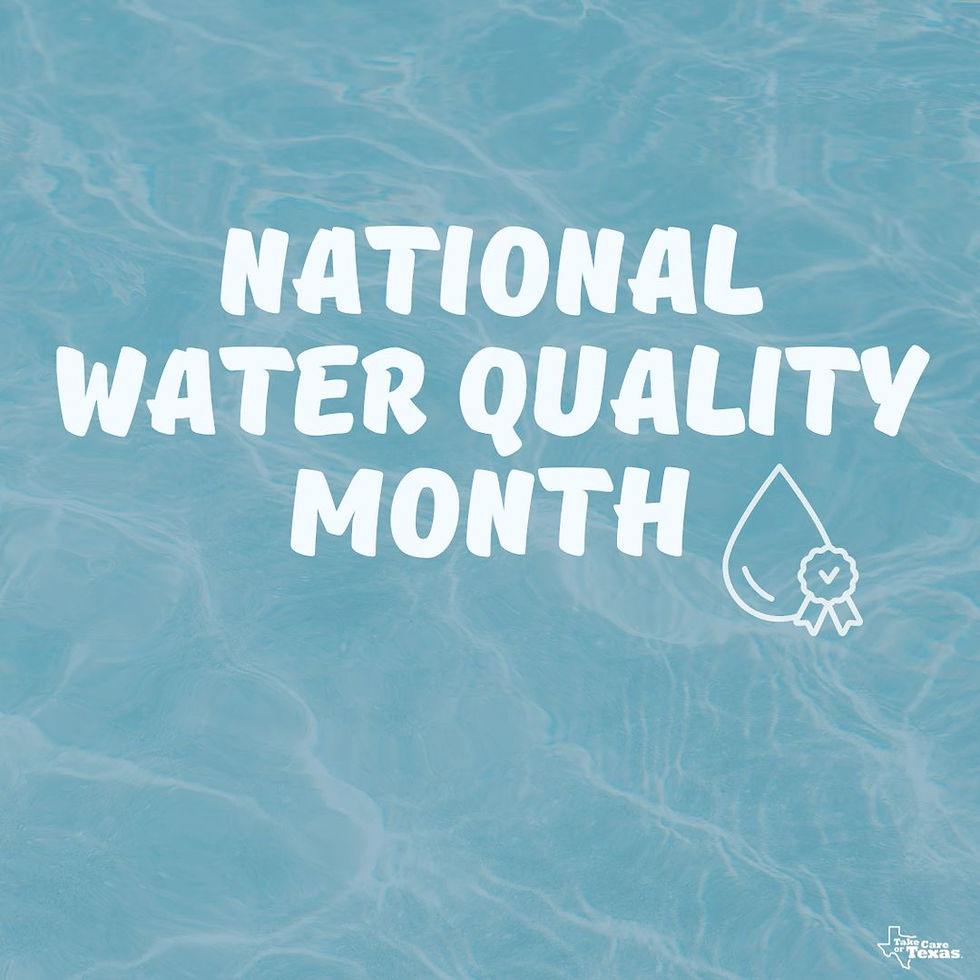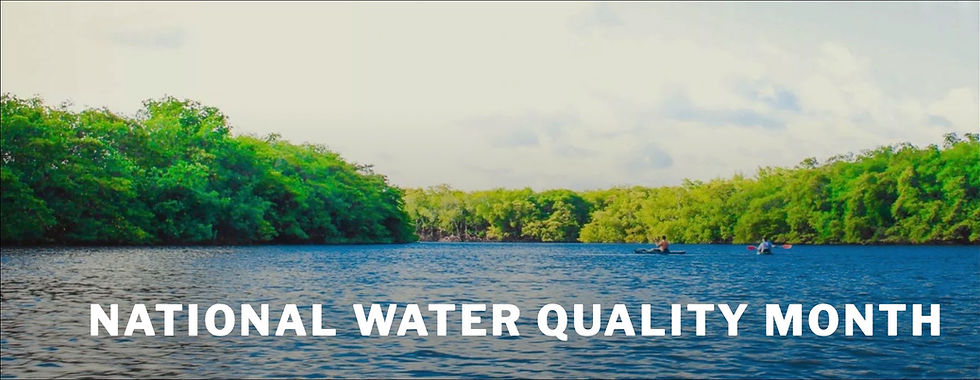
Summary: Learn how your actions and those of your community affect your water; 8 Things You Can Do at Home to Protect Your Water; One of the biggest water quality challenges in Texas is FOG; Willow Park Water Quality; and more.
Tags: #FortWorthWater
Latest Update: Friday, 14 August, 2023
Water: August is National Water Quality Month
Learn how your actions and those of your community affect your water.

The history of National Water Quality Month originally dates back to two US congressional acts that were passed in the early 1970s in an effort to protect our water sources. Starting with the Clean Water Act that was passed in 1972, the federal government began taking steps to curb water pollution by making it illegal to dump high amounts of toxic materials into bodies of water.
8 Things You Can Do at Home to Protect Your Water
Wash your car at a car wash: Even though it might cost more than washing your car at home, taking your car to a car wash saves water and prevents toxic chemicals from being flushed down your storm drains that eventually empty into our lakes, rivers, streams, and oceans Professional car washes are legally required to drain into sewer systems so that the water can be treated before being re-used.
Pick up after your pet: Animal waste is full of nitrogen which can remove oxygen from the water leaving it completely unusable for aquatic life.
Don’t hose down your driveway, use a broom.
Don’t use fertilizer made with phosphorus: After heavy rainfall or watering, these chemicals can leak into nearby groundwater sources. Try using organic materials or waiting for drier weather if you absolutely need to use lawn care products.
Do not flush expired or unwanted medication down the toilet: These products have toxic chemicals that should not be flushed down the drain.
Take used oil or antifreeze to a service station or recycling center.
Avoid using antibacterial soaps or cleaning products in your drain as they are also toxic to marine life.
Use a rain barrel to collect rainwater: Installing a rain barrel will not only save you money, but can also be used for watering your lawn or washing your car.
One of the biggest water quality challenges that Texas communities face is fats, oils, and grease (FOG) in sinks and products like “wipes” and tissues going down toilets. When FOG goes down sink drains and anything other than human waste and toilet paper go down toilets, they clog sewers, resulting in costly repairs to homes, businesses, and public infrastructure. Sanitary Sewer Overflows, the unintentional release of raw sewage, pose a threat to public health, as they can contaminate the water supply, causing water quality issues.
Take Care of Texas >
• Website
• Water Environment Association of Texas >WEAT is excited to celebrate Water Quality Month!
WEAT has created a list of additional resources for you to share.
• National Parks Conservation Association > Focus on Water: Celebrating National Water Quality Month
Unfortunately, 207 of our 397 national parks — 52 percent — have waterways that are considered “impaired” under the Clean Water Act, meaning they do not meet appropriate water quality standards. The most common reasons why they fail to meet the standards include high levels of pathogens, mercury, heavy metals, nutrients, and sediment. For national parks, most of these pollutants are the result of activities happening beyond park boundaries, often from upstream or airborne contaminants.
The annual observance of National Water Quality Month has rarely if ever been more important than it is this August due to a confluence of factors ranging from “forever chemicals” to new limits on federal wetlands protections to extreme climate.
Quality of water in Willow Park
• City of Willow Park > Water Department > Water Quality Reports > 2022 Consumer Confidence Report For The Public Water System City Of Willow Park
• Texas Commission on Environmental Quality TCEQ
Comments